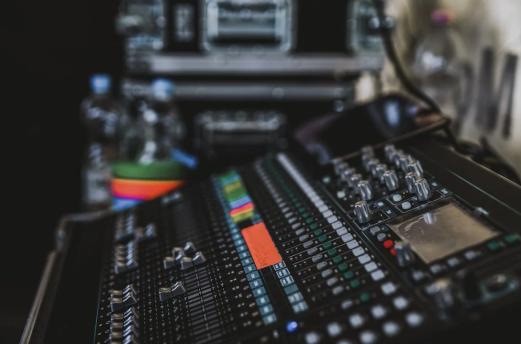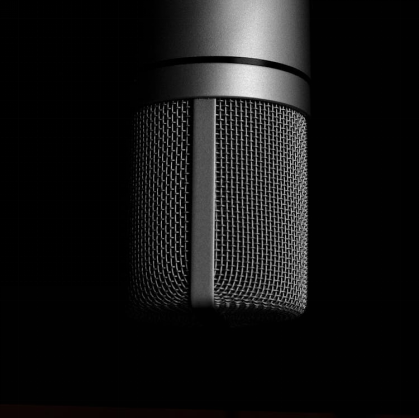Thanks to the progression of technology, audio evidence plays a critical role in legal proceedings, criminal investigations, and civil disputes. Audio forensic investigation is the scientific examination and analysis of audio recordings to authenticate audio, clarify, or enhance the quality of sound, often used in a court of law.
This specialized field of digital forensic science requires a deep understanding of audio technology and investigative techniques to extract valuable insights from audio files. The goal of an audio forensic investigation is to uncover the truth behind audio evidence, ensuring that it has not been tampered with and identifying the speakers or sounds involved.
Whether it’s to prove innocence, expose deception, or validate claims, audio forensic investigation has become a vital tool for law enforcement, legal professionals, and corporate entities. Read on as we dive into the key stages of an audio forensic investigation, explore its perks, provide tips for improving the process, and discuss current trends in this rapidly evolving field.
What is Audio Forensic Investigation?
Audio forensic investigation is a branch of forensic science dedicated to the analysis of audio recordings. It encompasses various procedures such as audio enhancement, noise reduction, speaker identification, and determining the authenticity of a recording.
The analysis is typically conducted using specialized software and techniques that help investigators uncover valuable details, such as conversations, sounds, and anomalies that may otherwise go unnoticed.
The Importance of Audio Forensics in Legal Cases
The significance of audio forensics in legal cases is paramount. Audio recordings are often submitted as evidence in criminal trials, civil disputes, and other legal proceedings.
These recordings can make or break a case by providing critical information that supports or refutes testimony. Digital forensic experts analyze the recordings to verify their integrity, authenticate the source, and determine whether the audio has been manipulated or altered.
Perks of Audio Forensic Investigation
There are several advantages to employing audio forensic investigation in legal and non-legal settings. Some of the perks include:
Verification of Authenticity: Audio forensics helps confirm whether a recording is genuine or has been tampered with.
Clarity of Sound: Enhancing the quality of audio recordings allows investigators to uncover key details, such as words spoken or background noises that may serve as clues.
Speaker Identification: Digital forensic experts can analyze voice patterns to identify speakers and link them to specific incidents.
Evidence for Court Proceedings: Audio evidence that has been forensically analyzed is often admissible in court and can greatly strengthen a legal case.

Stages of Audio Forensic Investigation
1. Collection of Audio Evidence
The first and most crucial stage of any audio forensic investigation is the collection of audio evidence. This involves retrieving the audio recording from the source, which could be anything from a phone call, surveillance camera, or voice message. Careful handling of the recording is essential to prevent any alteration or damage, as even the slightest change can compromise the investigation.
During this stage, it’s essential to follow chain-of-custody procedures to document the origin and handling of the evidence. This ensures that the audio recording’s integrity is maintained throughout the investigation.
2. Examination and Preliminary Analysis
Once the audio evidence has been collected, it undergoes an initial examination. This stage involves reviewing the quality and content of the recording to identify potential issues such as distortion, background noise, or interruptions. Digital forensic experts also assess whether the recording contains sufficient material to conduct a thorough analysis.
Preliminary analysis may also include checking the metadata of the audio file, such as the date and time of the recording, the file format, and any signs of editing or tampering.
3. Authentication of the Audio Recording
One of the most important stages of audio forensic investigation is authentication. This involves determining whether the recording is original, unaltered, and reliable. Digital forensic experts examine various factors, such as electrical signatures, background noise patterns, and voice characteristics, to verify that the recording has not been manipulated or edited.
Forensic techniques like waveform analysis, spectrograms, and signal processing are used to detect inconsistencies that could suggest tampering. If anomalies are found, they are thoroughly analyzed to determine their cause and whether they affect the reliability of the recording.
4. Enhancement of Audio Quality
Audio recordings often contain unwanted noise or distortions that can obscure important sounds or conversations. During the enhancement stage, digital forensic experts use advanced software to improve the quality of the audio. This can include reducing background noise, clarifying speech, and amplifying faint sounds.
Audio enhancement helps investigators focus on critical elements of the recording, such as identifying voices or sounds that may serve as evidence in the investigation. It’s important to note that audio enhancement does not alter the content of the recording but simply improves its clarity.
5. Noise Reduction Techniques
Noise reduction is a key aspect of the audio enhancement process. Various methods are used to remove background noise, such as static, wind, traffic, or other environmental sounds that can interfere with the clarity of the audio. This is especially important when dealing with low-quality recordings or when crucial details are hidden beneath layers of noise.
Common noise reduction techniques include frequency filtering, adaptive noise cancellation, and spectral subtraction. Each of these methods is carefully applied based on the type and severity of the noise present in the recording.
6. Speech and Voice Identification
A significant part of audio forensic investigations is identifying the individuals speaking in the recording. Voice identification involves analyzing the vocal characteristics of a speaker, such as pitch, tone, and cadence. Investigators may compare a known sample of a person’s voice with the voice on the recording to determine whether they match.
Digital forensic experts use software that analyzes voiceprints—unique patterns created by a person’s vocal cords—to match voices with a high degree of accuracy. This technique is often used in criminal cases where identifying the speaker is crucial.
7. Transcription of the Audio Content
Once the audio has been enhanced and analyzed, it’s often transcribed. This involves creating a written document of the spoken words within the recording. Transcriptions are particularly useful in legal cases, where exact wording can make a significant difference. The accuracy of the transcription is critical, as it must reflect the audio content as precisely as possible.
Digital forensic experts may use specialized tools to assist in transcription, especially when dealing with challenging recordings that include multiple speakers, background noise, or accents.
8. Sound Source Identification
Sound source identification focuses on recognizing and analyzing non-verbal sounds in the recording, such as gunshots, glass breaking, or footsteps. These sounds can serve as important evidence in investigations, helping to reconstruct events or confirm witness testimony.
Digital forensic experts may compare the sound in the recording with known sound samples to identify its source. This process can be used to determine the type of weapon fired or the distance from which a sound originated, among other details.
9. Frequency and Time-Domain Analysis
Frequency and time-domain analysis is a technical stage in which the audio recording is analyzed to study the frequency patterns of the sound waves over time. Examining these patterns helps investigators gain insights into the nature of the sounds, detect anomalies, and differentiate between different types of sounds.
This analysis is particularly useful for identifying tampering, as it can reveal unnatural breaks or distortions in the recording that may not be audible to the human ear.
10. Detection of Audio Tampering and Editing
Detecting audio tampering is a critical part of the forensic investigation process. Analyzing audio patterns and signatures helps digital forensic experts determine whether the recording has been edited or manipulated. Any form of tampering, such as splicing, removing sections, or altering the speed of playback, is meticulously examined.
Investigators look for telltale signs of tampering, such as abrupt changes in waveforms, inconsistent background noise, or unnatural pauses in the recording.
11. Validation of Results
Once all analyses are complete, digital forensic experts validate their findings to ensure the accuracy of the conclusions. This involves double-checking the results, reviewing the methodologies used, and confirming that the evidence is reliable and scientifically sound.
Validation is particularly important when the findings will be presented in court, as they must be able to withstand legal scrutiny.
12. Reporting the Findings
At the end of the investigation, digital forensic experts prepare a detailed report outlining their findings. The report typically includes a summary of the analysis performed, the methods used, and the conclusions drawn from the audio recording. It also includes any enhancements or transcriptions made during the process.
In legal cases, this report may be submitted as evidence and may also be presented in court by digital forensic experts during testimony.
Trends in Audio Forensics
As technology continues to advance, new trends are emerging in the field of audio forensics. Some of the most notable trends include:
Artificial Intelligence (AI) and Machine Learning: AI-powered tools are being used to enhance audio quality and improve voice identification with greater accuracy.
3D Audio Reconstruction: Advances in 3D audio technology are enabling digital forensic experts to create spatial reconstructions of sound environments, allowing them to pinpoint the location of sounds within a recording.
Blockchain for Chain of Custody: Blockchain technology is being explored as a means of securing the chain of custody for digital audio evidence, ensuring that it cannot be tampered with during the investigation process.
Tips for Conducting Audio Forensic Investigations
To conduct a successful audio forensic investigation, there are several best practices to keep in mind:
Always Preserve the Original File: Work on a copy of the recording, preserving the original to ensure its integrity.
Document Everything: Keep detailed records of every step taken during the investigation, including the tools and methods used.
Use High-Quality Equipment: Invest in high-quality audio software and equipment to ensure the best possible results.
Stay Current with Technology: As audio technology evolves, digital forensic experts must continually update their skills and tools to keep up with the latest advancements.
Challenges in Audio Forensics
Audio forensic specialists face a variety of challenges in their work, including:
Poor-Quality Recordings: Low-quality audio files, especially those with heavy noise interference, can make it difficult to extract useful information.
Multiple Speakers or Sounds: Recordings with multiple voices or overlapping sounds present challenges in isolating and identifying key audio elements.
Legal Admissibility: Digital forensic experts must ensure that their analysis follows legal standards to be admissible in court.
Trust Eclipse Forensics for Expert Audio Forensic Services
When it comes to uncovering the truth behind audio evidence, Eclipse Forensics has the expertise you need. Their team of certified cyber forensic experts uses cutting-edge technology to enhance, authenticate, and analyze recordings with precision and accuracy.
Whether you need to clarify a critical conversation, verify the authenticity of a recording, or identify a speaker, their comprehensive digital forensic services can make a difference in your case.
Don’t leave your case to chance—trust the forensic audio specialists at Eclipse Forensics to deliver reliable, admissible audio forensic analysis that stands up in court. Contact them today for a consultation and take the first step toward uncovering the truth.

